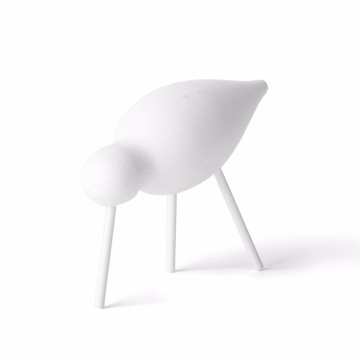The History of Kaisendon: Japan’s Delicious Seafood Rice Bowl
Kaisendon (海鮮丼), a seafood rice bowl, is one of Japan’s most beloved dishes, renowned for its fresh, vibrant flavors and its showcase of the country's rich coastal heritage. The dish combines the umami of fresh raw seafood with the comforting warmth of steamed rice, creating a harmonious balance of textures and flavors. To understand the history and evolution of kaisendon, we must explore its origins, the cultural significance of seafood in Japan, and the culinary techniques that make this dish both simple and refined.
Origins: The Emergence of Kaisendon
The history of kaisendon is closely tied to Japan’s long-standing relationship with the sea. As an island nation, Japan has always had access to a wide variety of fresh seafood, and its cuisine has been shaped by the abundance of fish and marine life that surround it. While sushi and sashimi are the most famous examples of raw fish in Japanese cuisine, kaisendon is a more casual, yet equally flavorful, way to enjoy fresh seafood.
The roots of kaisendon can be traced back to the Edo period (1603–1868), when Tokyo, known then as Edo, became a thriving port city. During this time, the city became the epicenter of Japan’s seafood trade, and its inhabitants began to experiment with ways to incorporate fresh fish into their daily meals. Seafood rice bowls were a natural progression of this culinary evolution, as people sought convenient, affordable ways to enjoy the bounty of the sea.
The dish gained further popularity during the Meiji period (1868–1912) as Japan continued to modernize and urbanize. With the expansion of railways and the development of urban markets, kaisendon became widely available at restaurants, especially near port cities like Tokyo and Hakodate, where fresh seafood could be easily obtained. These seafood rice bowls became an essential part of the Japanese diet, offering a quick, nourishing meal that highlighted the natural flavors of the sea.
The Ingredients of Kaisendon: A Perfect Symphony of Freshness
At its core, kaisendon is a simple yet sophisticated dish that showcases the freshness of the seafood. The basic components of kaisendon are:
-
Steamed Rice (Shari): The foundation of any kaisendon is a bowl of steamed Japanese short-grain rice, also known as shari. This rice is slightly sticky, allowing it to adhere to the seafood and create a cohesive eating experience. The rice is typically served warm or at room temperature, providing a soft contrast to the cold, fresh seafood.
- Fresh Seafood: The star of kaisendon is the seafood, which can vary depending on the region and availability. Some common fish and shellfish used in kaisendon include:
Tuna (Maguro): Rich and fatty, with a deep red color.
Salmon (Sake): Buttery and mildly sweet.
Sea Urchin (Uni): Creamy and umami-packed with a delicate texture.
Shrimp (Ebi): Sweet and crunchy, often served raw or lightly blanched.
Octopus (Tako): Tender with a slight chew, adding a bit of textural variety.
Squid (Ika): Delicate and slightly firm, often sliced thinly for a silky texture.
The seafood is typically served raw, though some variations of kaisendon may include lightly cooked elements, such as grilled eel (unagi) or boiled shellfish. The freshness of the seafood is paramount in achieving the umami-rich, clean flavors that define the dish.
- Toppings and Garnishes: To complement the seafood, kaisendon is often topped with sliced vegetables, seaweed, and pickles. Common garnishes include:
Shiso leaves: A fragrant, slightly peppery herb that adds a refreshing contrast.
Ginger (Gari): Thin slices of pickled ginger to balance the richness of the seafood.
Wasabi: A small dollop of fresh wasabi for a bit of spicy heat and aromatic depth.
Sesame seeds: For an earthy flavor and a bit of crunch.
The combination of these ingredients provides a symphony of flavors, from the sweetness of the fish to the salty and savory depth of the garnishes.
Culinary Techniques: Crafting the Perfect Kaisendon
While kaisendon may seem simple, creating the perfect version of this dish requires attention to detail and culinary expertise. Several key culinary techniques come into play:
- Selecting Fresh Seafood: The quality of the seafood is the most crucial element in making a great kaisendon. It’s essential to source fresh, sustainable seafood, as its flavor and texture will be the highlight of the dish. Sashimi-grade fish is typically used to ensure that the seafood is safe to eat raw and has the ideal freshness.
- Perfecting the Rice: The steamed rice used in kaisendon must be cooked to the perfect fluffiness. It should be neither too dry nor too sticky, allowing it to act as a perfect base for the seafood. Some chefs also lightly season the rice with rice vinegar, sugar, and salt—a technique borrowed from sushi rice—to add a slight tanginess and balance the flavors of the seafood.
- Arranging the Seafood: The seafood is carefully arranged on top of the rice in an aesthetically pleasing manner. Each type of seafood is usually placed in a way that highlights its color and texture, creating a visually appealing dish. The goal is to create a balance of colors, textures, and flavors in each bite.
The Evolution and Modern Variations of Kaisendon
In modern Japan, kaisendon remains a beloved dish, particularly in coastal regions where seafood is freshly caught and readily available. It is often enjoyed at specialized kaisendon restaurants, where patrons can choose from a variety of seafood options or select from chef’s specials.
Some variations of kaisendon have emerged over time, reflecting Japan’s evolving culinary landscape:
- Donburi-style Kaisendon: Some versions of kaisendon are served in a bigger bowl, similar to a donburi, allowing for a more substantial meal. These bowls may feature larger portions of seafood or a wider variety of fish, making them perfect for more hearty appetites.
- Temaki Kaisendon: A fusion twist on the traditional, this version involves hand rolls filled with the same fresh seafood and steamed rice found in kaisendon. The seaweed wrap adds a crispy texture that contrasts with the smoothness of the rice and fish.
- Seasonal Kaisendon: Some chefs incorporate seasonal ingredients, showcasing local catches and regional specialties, such as buri (yellowtail) in the winter or mackerel (saba) in the summer, creating unique variations of the dish based on what’s fresh and in season.
Culinary Words and Techniques in Kaisendon
Several culinary terms and techniques are important when preparing or discussing kaisendon:
- Umami: The rich, savory taste foundin both seafood and the seasonings, particularly in the seaweed and fish roe that often accompany kaisendon.
- Sashimi-grade: Referring to raw fish that is safe to eat due to its high freshness and quality.
- Donburi: A rice bowl that is usually topped with protein or seafood, often served with a flavorful sauce.
- Mizutaki: A term used to describe the process of boiling or simmering seafood to bring out its flavors and textures, though not commonly used in raw kaisendon.
Conclusion: Kaisendon – A Reflection of Japan’s Coastal Heritage
Kaisendon is not just a meal; it is a reflection of Japan’s deep connection to the sea and its ability to showcase the freshest ingredients in a simple yet refined manner. With its umami-packed seafood, fluffy rice, and balanced garnishes, kaisendon represents the art of fresh, seasonal eating that is so deeply rooted in Japanese culture. Whether enjoyed at a local restaurant, a bustling fish market, or at home, kaisendon remains a timeless dish that captures the essence of Japan’s maritime abundance.




